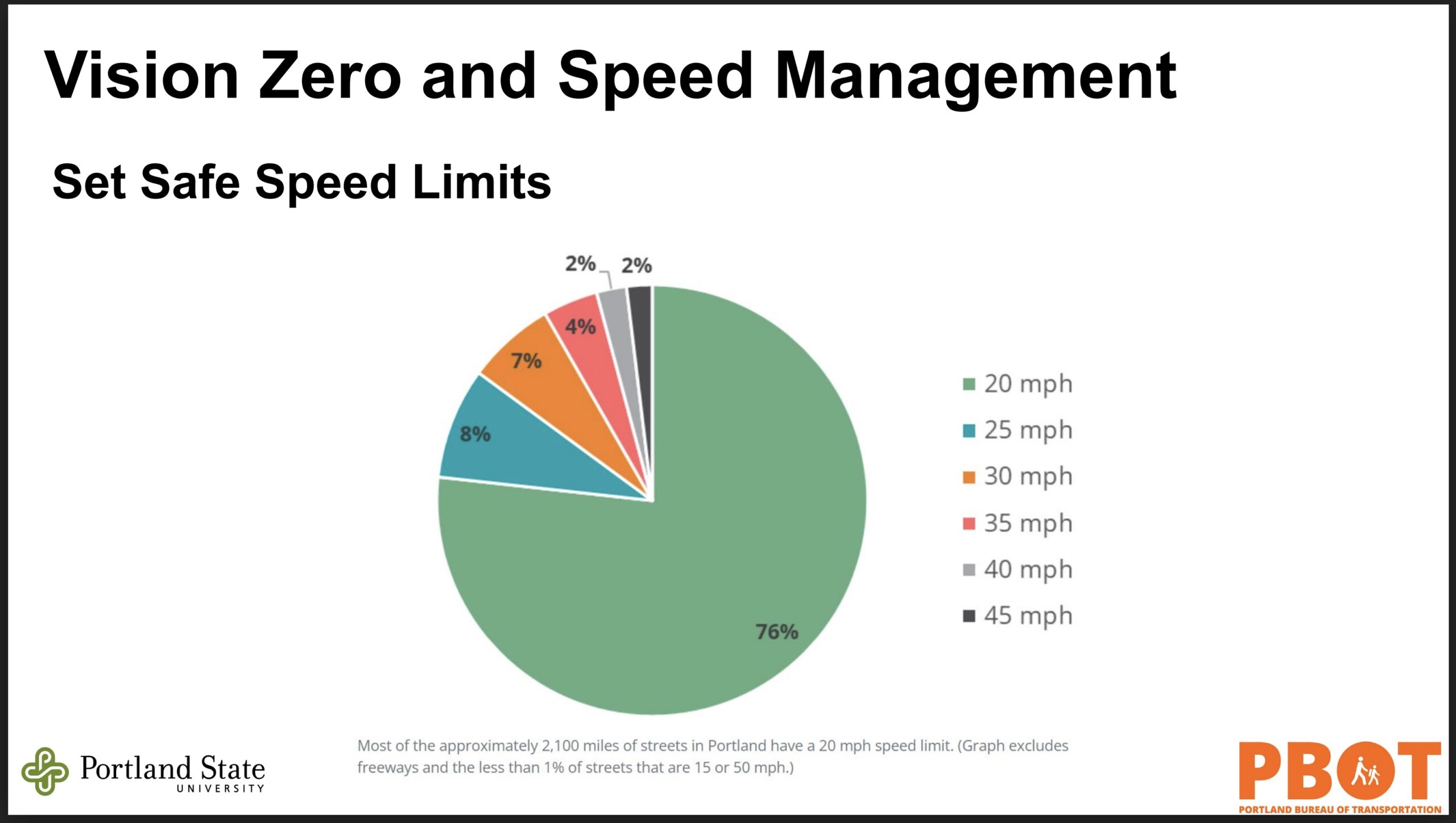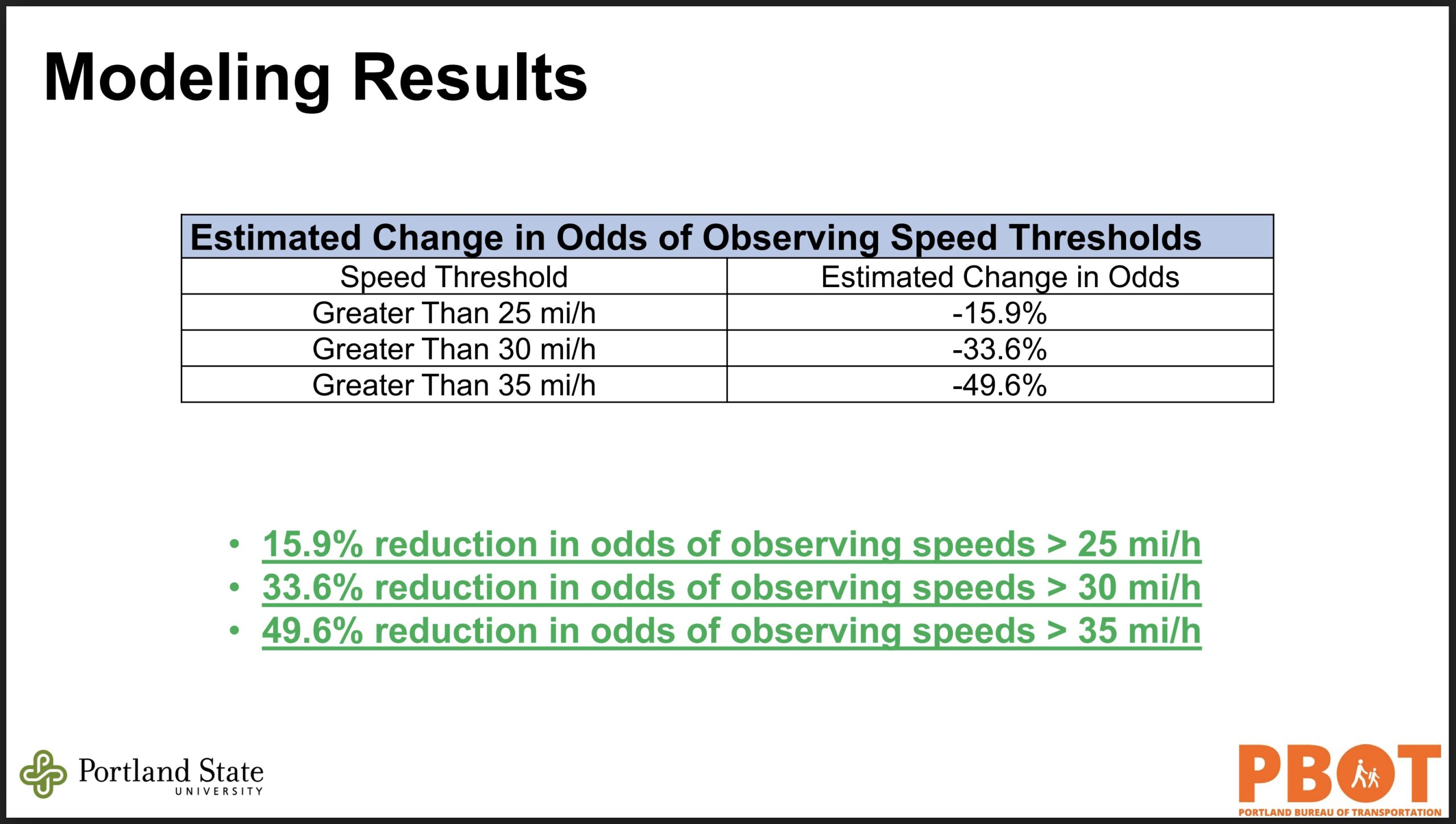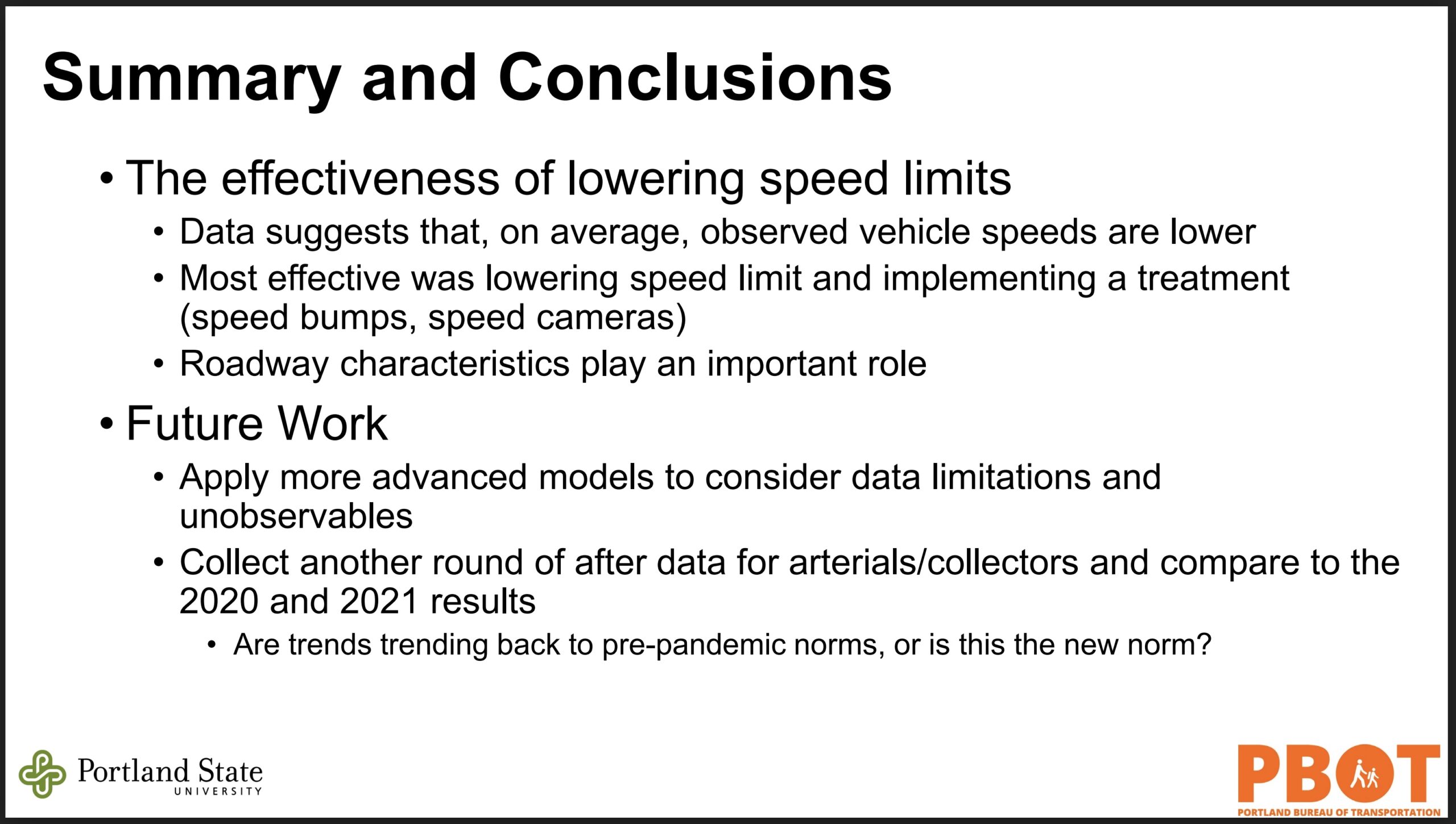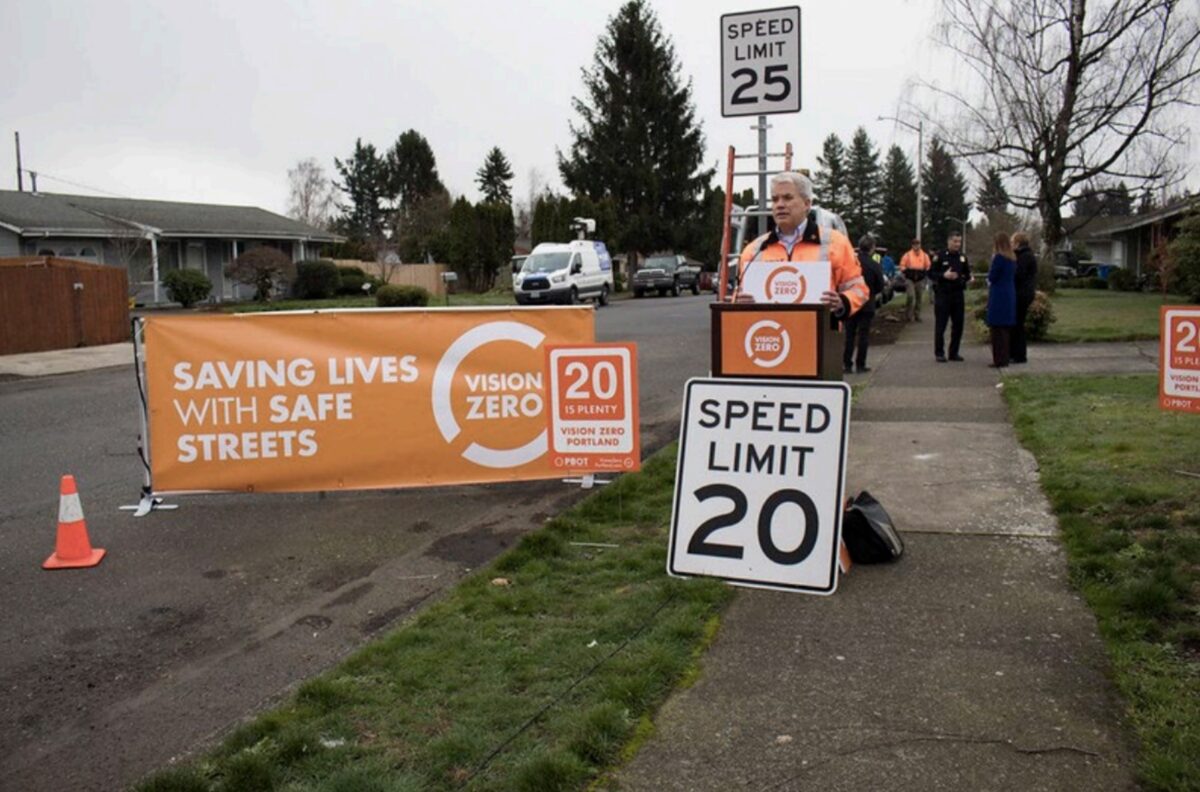Vision Zero and speed limit reduction were the topics of presentations at a Transportation Research and Education Center (TREC) Friday Transportation Seminar at Portland State University last week.
Clay Veka, Portland Bureau of Transportation Vision Zero program coordinator introduced the bureau’s “Safe Systems” approach to speed management, and Portland State University Research Associate and Adjunct Professor Jason Anderson presented the results of two studies he conducted to determine the effectiveness of PBOT’s speed reduction efforts. (PBOT commissioned the studies.)
Anderson studied travel speeds before and after PBOT’s 20 is Plenty program swapped out 25 mph signs for 20 mph signs on small local streets and found that it successfully lowered traffic speeds, with statistical significance. Two years ago, PBOT touted that result as supporting the program’s efficacy, and it was covered by area media.



On Friday, Anderson presented data from an unpublished companion study, Speed Limit Reduction on Arterials and Collectors. PBOT did not have a high-profile program for the larger roads similar to the “20 is Plenty” campaign for smaller, residential streets.
The bureau used historical speed readings as “before” baselines, and collected post-speed-reduction “after” data in 2020 and 2021—during the middle of the pandemic. Anderson pointed out that the pandemic introduced confounding factors for which there were no experimental controls, such as riskier driving behavior and less traffic.
Despite pandemic complications, the study reported that reducing the speed limit by 5 mph resulted in a modestly decreased average observed speed of 2.0% for arterials and 2.7% for collectors. To save the reader doing the math, 2% of 25 mph is 0.5 mph.
Friday’s audience was underwhelmed by those results. A couple of questioners skirted the issue, but eventually someone got direct: What should policymakers with “limited resources” make of the “small gains”?
PBOT’s Veka fielded that question,
“Setting the speed limit is setting expectation, what is the appropriate speed to travel? And…that’s not enough, you can’t just do that. But it can be relatively quick compared to major redesign projects, and it can be effective. In partnership—adding those street-calming elements is really important. But I would say don’t wait. Do what you can now.“
In the face of possibly inconclusive study results, Veka might be too readily retreating from the efficacy of reducing speed. Reading “after” results in the midst of a traffic-altering pandemic could be like surveying the land in the middle of an earthquake. The methods could all be sound, but gosh, the earth is shaking.
Experiments ideally test one change at a time. Either you can try to determine the effects of a pandemic on observed speed, or you can test the effect of posting lower speed limits. When the world conspires to make both happen at the same time, it is difficult to tease apart the causality of your observations.



